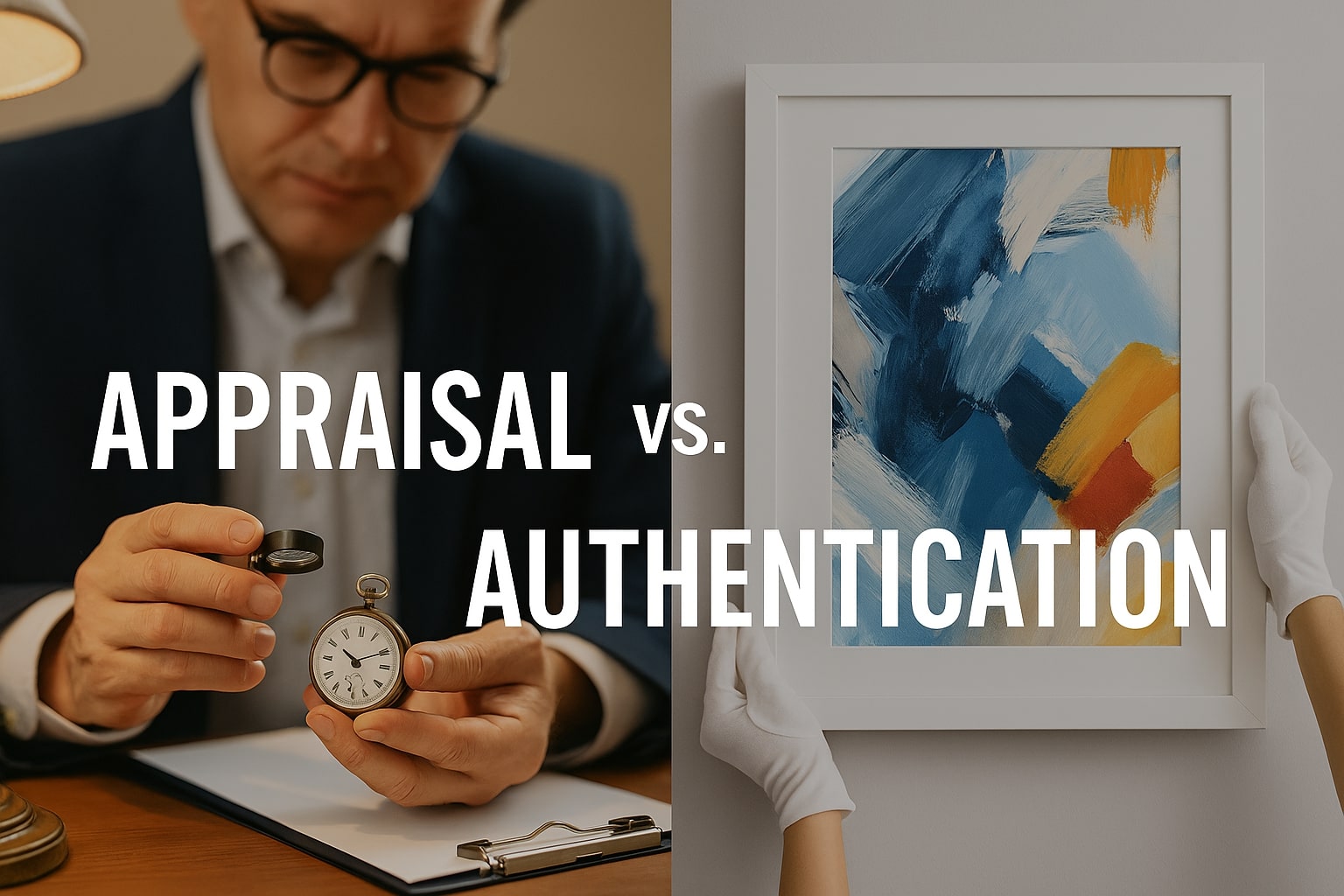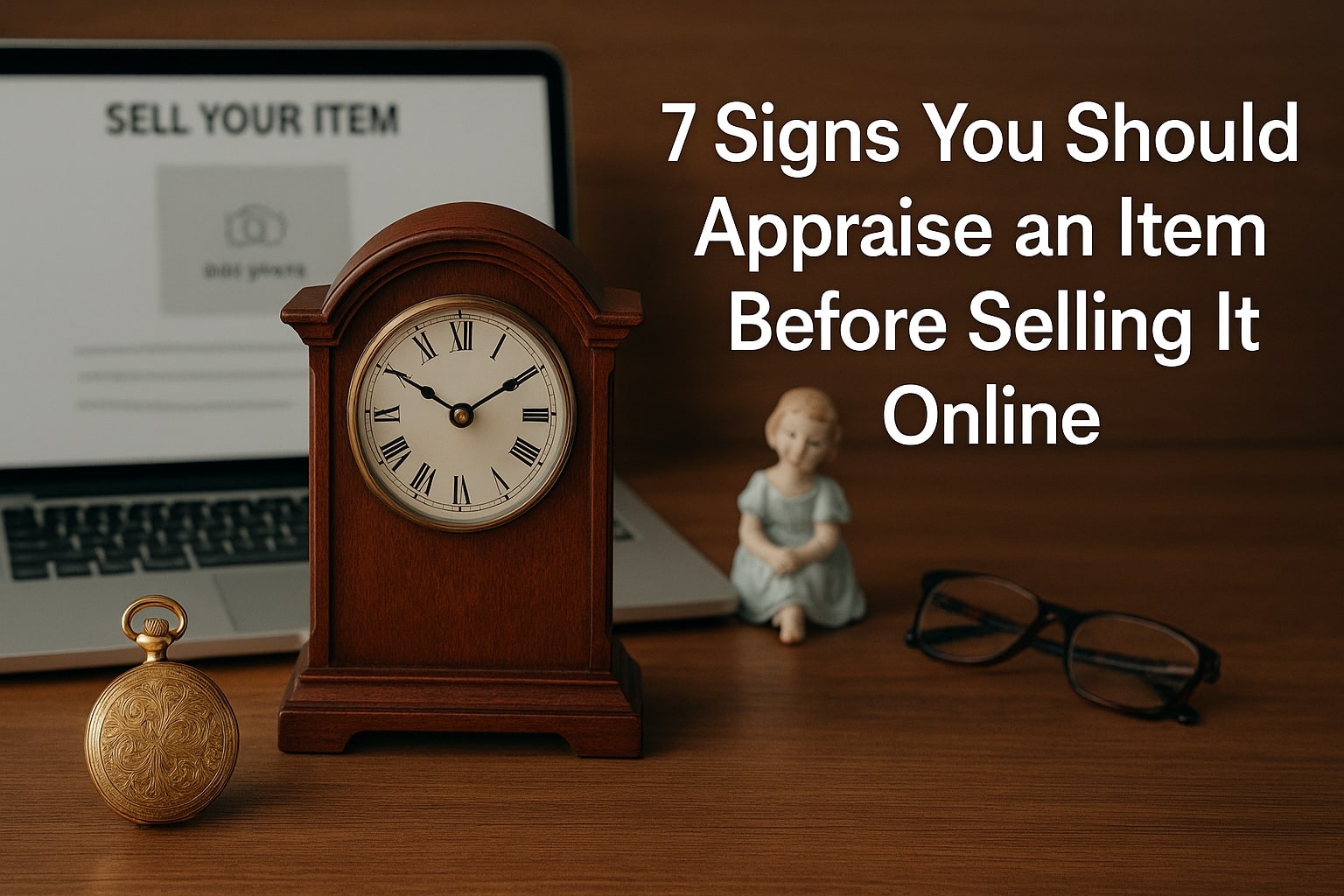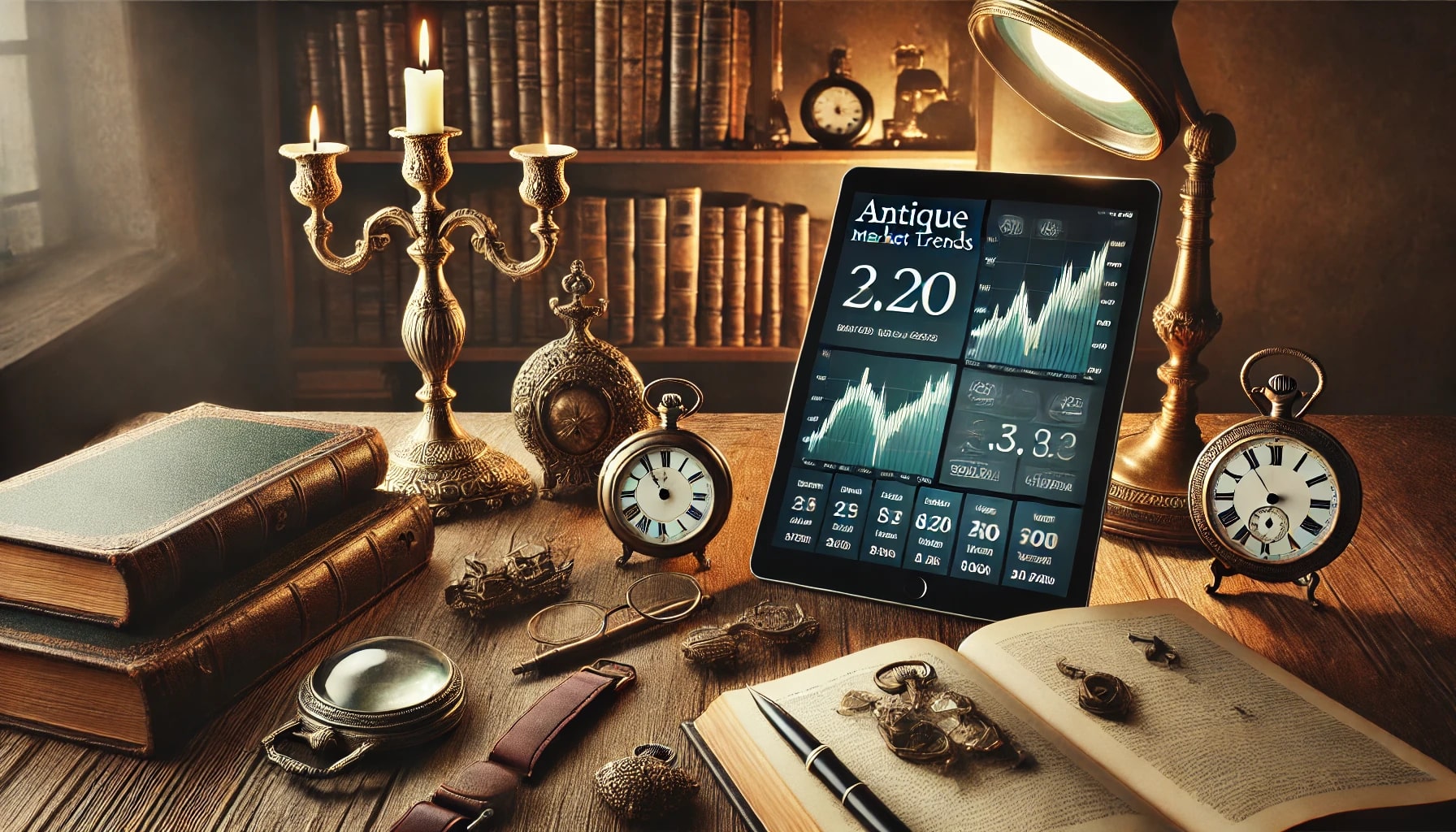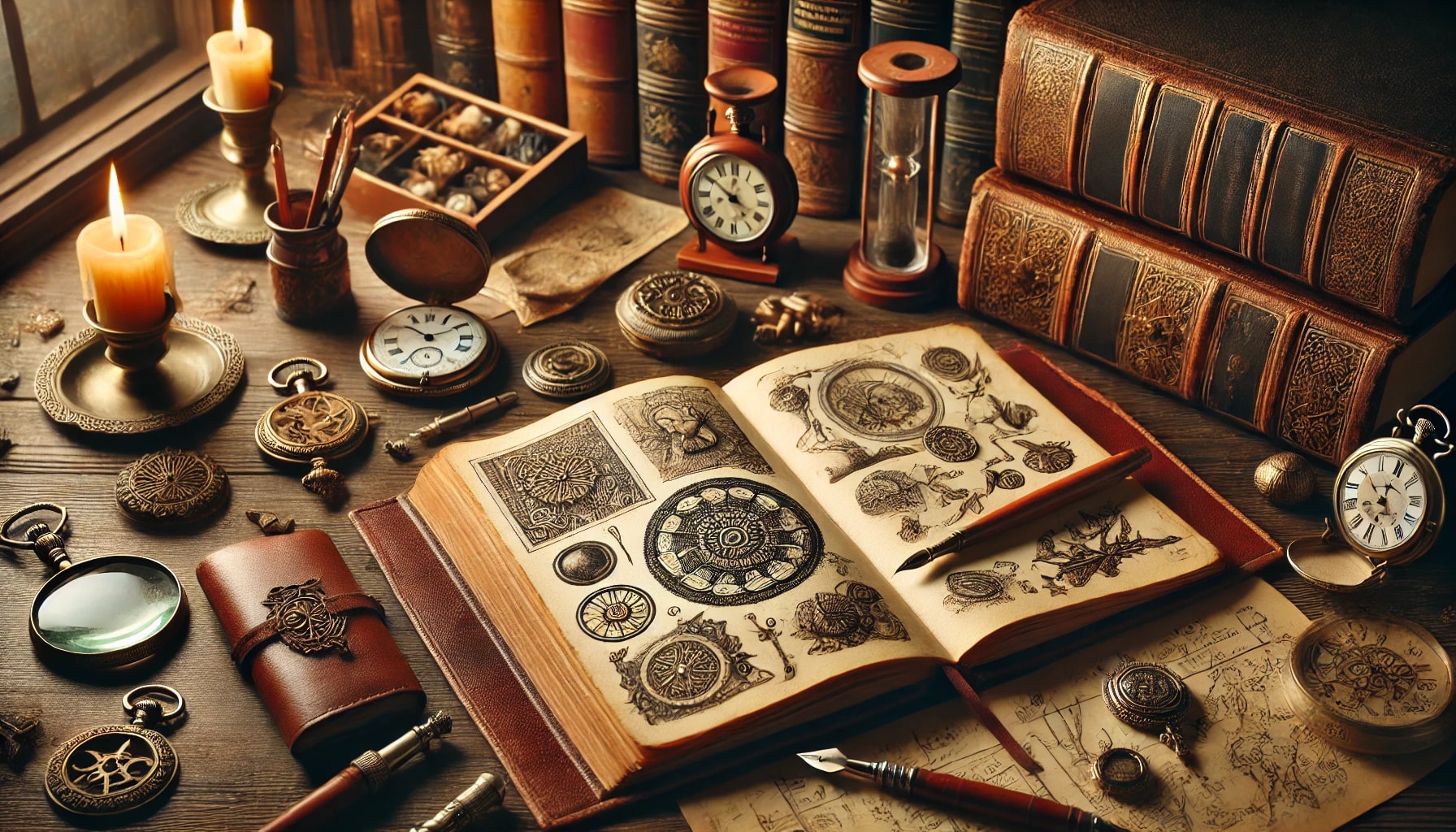Appraisal vs. Authentication: What’s the Difference and Why You Need Both
Appraisal assesses the financial value of art or antiques based on market research and condition, while authentication determines an object’s legitimacy and origin through expert analysis and scientific testing. Both processes are vital: appraisal protects against financial inaccuracies, and authentication guards against forgeries or legal pitfalls. Skipping either exposes collectors to financial, legal, and reputational risks. Understanding their distinct roles and best practices is fundamental for confidently traversing the art and antiques market—further insights await those seeking thorough guidance.
Appraisal and Its Role in the Art Market
Appraisal serves as the cornerstone of value determination in the art and antiques market, providing a formal, professional assessment of an object’s worth through a documented report. This value assessment encompasses not only monetary considerations but also historical, cultural, and aesthetic significance.
Conducted by qualified appraisers, the process evaluates provenance, condition, artist reputation, rarity, and current market trends to establish fair market value, insurance value, liquidation value, auction estimates, or donation values.
Appraisals underpin critical functions such as private sales, auctions, insurance, estate planning, and compliance with tax regulations. They bring transparency and trust to transactions by reflecting the dynamic relationship between buyers and sellers, influenced by evolving market demand and broader economic factors.
The credibility of an appraisal relies on the appraiser’s expertise, adherence to ethical standards, and objectivity, ensuring that the resulting documentation is defensible for clients, insurers, courts, and tax authorities alike.
Authentication and Its Importance
While the art market is often defined by questions of value, the determination of authenticity underpins every significant transaction involving fine art and antiques.
Authentication is a rigorous process integrating provenance research, scientific analysis, and expert consensus. Provenance research traces ownership history and exhibition records, providing critical evidence for or against authenticity. The use of digital ledgers and blockchain now offers supplementary safeguards, ensuring records remain tamper-proof.
Authentication demands thorough provenance research, scientific scrutiny, and collective expert judgment, with blockchain offering new layers of security and transparency.
Scientific and technical analyses—such as spectroscopy, X-ray imaging, and carbon dating—identify materials and techniques consistent with an artist’s period or known oeuvre. Stylistic assessment by art historians and conservators further strengthens attribution.
Significantly, best practices dictate that authentication is achieved through expert consensus rather than a single opinion, minimizing risk. Authentication is required for insurance, exhibition, and sale, and its absence exposes buyers to potential legal and financial liabilities.
Consequently, authentication is indispensable in protecting both market integrity and client interests.
Core Differences Between Appraisal and Authentication
Distinct functions define the roles of appraisal and authentication within the art and antiques market.
Appraisal is centered on determining the current monetary value of an item, utilizing appraisal methods such as market analysis, provenance review, and comparison to recent auction results. This process is crucial for insurance, estate planning, and informed buying or selling.
In contrast, authentication focuses on verifying the legitimacy and origin of an item through authentication techniques, including expert analysis of physical characteristics, scientific testing, and stylistic comparison to confirmed works.
While appraisers rely on market data and assume authenticity unless otherwise indicated, authenticators employ specialized scientific and historical expertise to detect forgeries and validate authorship.
The documentation produced also differs: appraisal results in a valuation report, whereas authentication yields a certificate or scientific analysis report.
Ultimately, both processes serve distinct but interdependent purposes, safeguarding value and trust within the market for collectors, investors, and institutions.
How Appraisal and Authentication Processes Work
A thorough understanding of art and antique valuation requires recognizing the distinct procedural rigor underpinning both appraisal and authentication.
The appraisal process commences with a meticulous physical inspection, where condition, medium, dimensions, and technique are evaluated. Critical documentation—provenance, prior ownership, receipts, and exhibition history—are analyzed, while detailed photographs secure visual records.
Valuation methods involve extensive market research, comparing auction results and private sales of comparable objects. Appraisers scrutinize current market trends and historical data, justifying findings with supporting sales evidence and condition assessments. The resulting appraisal report, an authoritative and signed document, details object description, methodology, and estimated value.
Authentication, in contrast, employs scientific testing—such as pigment analysis or carbon dating—and stylistic comparison against catalogues raisonnés. Provenance is rigorously traced, and expert panels may be consulted to confirm authorship.
Certificates of authenticity, underpinned by specialist opinion and technical evidence, provide crucial legal and market assurance. Professional expertise is fundamental throughout both processes.
Why Both Services Are Essential for Collectors and Institutions
Because the art and antiques market is characterized by high financial stakes and complex legal considerations, both appraisal and authentication services are crucial for collectors and institutions.
Authentication establishes the genuineness and provenance of an object, while appraisal provides an informed, market-based valuation. This dual approach underpins collector confidence by minimizing the risk of fraud, overpayment, or misrepresentation.
Extensive documentation from both processes is often required for insurance, estate planning, and collateralization, ensuring legal and financial protection. For institutions, dual verification is central to institutional integrity, supporting responsible stewardship, transparent acquisitions, and accurate reporting.
Auction houses, museums, and private buyers demand both services to optimize market value and liquidity, expedite transactions, and preserve historical significance.
Rigorous adherence to these standards bolsters reputations, facilitates scholarly research, and meets requirements for cultural insurance and donations, making appraisal and authentication fundamental pillars of trust and effective asset management in the art and antiques sector.
Risks Associated With Skipping Either Appraisal or Authentication
When either appraisal or authentication is omitted in transactions involving art and antiques, the resulting exposure to financial, legal, and reputational risk is substantial.
The absence of a credible appraisal often leads to severe financial consequences—assets may be drastically undervalued or overvalued, affecting sales, insurance claims, or estate settlements.
Without authentication, buyers risk acquiring forgeries, rendering investments worthless and increasing fraud vulnerability.
Legally, inaccurate or uncertified appraisals can trigger tax penalties, disputes with authorities, and undermine legal standing in court.
Failure to authenticate can result in criminal charges if items are later identified to be stolen or illicitly exported.
Reputational risks are also considerable; associations with forgeries or disputes can result in exclusion from reputable market channels and lasting damage to professional credibility.
Moreover, insufficient documentation creates market barriers, impeding sales, transfers, and access to insurance or financial services.
Skipping these crucial steps undermines both asset value and market trust.
Best Practices for Securing Reliable Valuation and Authenticity
Securing reliable valuation and authenticity for art and antiques demands a methodical, evidence-based approach that mitigates the substantial risks inherent to this market. The process begins with documentation accuracy: all details—dimensions, medium, condition, provenance, and sales history—must be meticulously recorded. High-resolution photographs, condition reports, and verified provenance documentation form the foundation of any credible appraisal or authentication effort.
Reliable art valuation starts with meticulous documentation and evidence-based methods to minimize risks and establish a credible foundation for authenticity.
Expert selection is similarly vital. Only independent, credentialed professionals with demonstrated expertise relevant to the specific artist or period should be engaged. Their affiliations, references, and methodologies must be thoroughly vetted to guarantee impartiality and adherence to industry standards.
Best practices include employing multiple authentication methods, such as technical analysis, provenance research, and comparative study with catalogue raisonnés. Written reports and certificates should be obtained and cross-validated by secondary experts for high-value items.
Maintaining objective, transparent records and periodically updating findings guarantees ongoing accuracy and defensibility in both valuation and authenticity assessments.
Conclusion
Both appraisal and authentication are indispensable pillars in the stewardship of art and antiques. While appraisal provides an informed estimate of value, authentication establishes an item’s true origin and legitimacy. Relying on one without the other exposes collectors and institutions to significant financial and reputational risks.
A careful integration of these services, supported by qualified professionals, guarantees both the integrity and the market viability of any collection, ultimately safeguarding long-term investment and cultural heritage.












Good